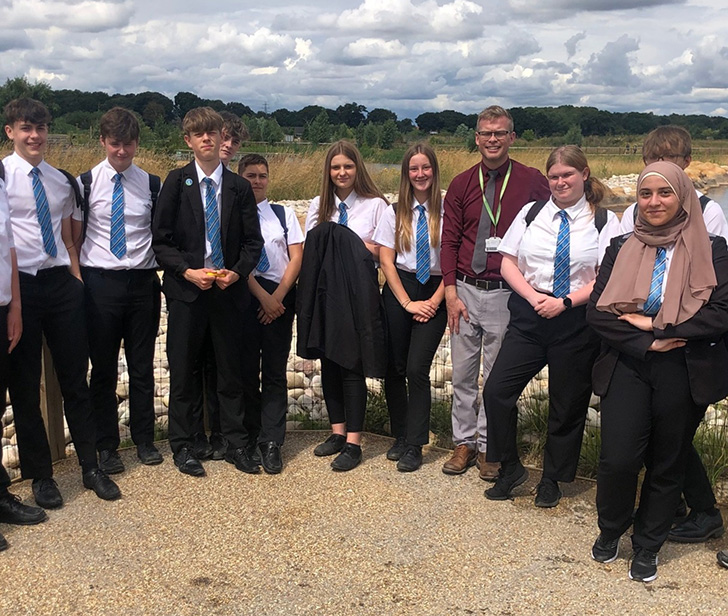Curriculum Sequencing Documents - History
Coherence and Connections-History Louth Academy
- Sequencing of the curriculum is clearly more than the ordering of its component parts – it is about the relationships and connections between them, and the deeper understanding that the sequence allows our students to access, the broader themes and connections between its parts.
- Practical Application: This could be as simple as using signposting statements. Where have we seen this before? What does this remind us of? How does this have a relationship with what happened previously? How does our understanding of the previous concept inform our understanding of this one?
Link to whole school focus- Cognitive Load Theory
- Cognitive load theory informs our curriculum sequencing by revealing the role of memory in helping students build the cognitive architecture required to access the History curriculum effectively.
- As working memory is limited, we need to sequence our curriculum to reduce cognitive load by drawing on prior knowledge and logically sequencing episodes of learning with the curriculum design, so they accumulate in small stages, securing understanding and skills at one stage before moving on to the next and avoided extraneous cognitive load.
Historical skills: What hierarchical skills and themes are essential to a broad and balanced curriculum?
Key Skills
Source analysis and use of evidence Historical interpretations Historical enquiry Historical concepts- change and continuity, cause and consequence
Louth Academy History Themes
Themes outlined include the following:
Belief systems – Religious and ideological, how does these varying belief systems we cover underpin the history we study at Louth Academy.
Power and Conflict - Fundamental them driving change and historical concepts of cause and consequence.
Ordinary lives – Social history a focus on the individual level of human lives will allow better understanding of the overarching broader themes impacting on human lives in history.
The growth of Empire and its decline – linked to this would be the contribution of religion and ideas, economics and government to the expansion of Empire overseas.
Belief Systems Power and Conflict Ordinary Lives The growth of Empire and its decline
→ Scroll right to view the table.| Year 7 – Identity, Transformation and Ordinary Lives. (National Curriculum KS3 The Development of Church, state and society in Britain) |
Year 8 – Expansion, Empires and International Encounters. (National Curriculum KS3 Ideas of political power, industry and empire) |
Year 9 – Conflict, Power and Beliefs. (National Curriculum KS3 Challenges for Britain, Europe and the wider world 1901 to the present day.) |
| Autumn: Who are the British? What was the significance of the Roman Empire for Britain and the wider world? Power and Conflict The growth of Empire and its decline Source analysis and use of evidence Historical concepts- change and continuity, cause and consequence |
Autumn: What can the Slave trade tell us about the British Empire? The Empire growth and its decline. How did Industrialisation change the lives of people in Britain? Belief Systems Power and Conflict Ordinary Lives The growth of Empire and its decline Source analysis and use of evidence Historical interpretations Historical enquiry |
Autumn: Peace treaties and International Agreements, how did they create problems for future Europe? How did political belief systems shape a century of 20th Century conflict? Belief Systems Power and Conflict Source analysis and use of evidence Historical interpretations Historical enquiry Historical concepts- change and continuity, cause and consequence |
| Spring: How did the Norman Conquest change England and its people? How did the lives of ordinary people change during the Medieval Period? How did the power of Medieval Kings change over time? Belief Systems Power and Conflict Ordinary Lives Source analysis and use of evidence Historical interpretationsHistorical concepts- change and continuity, cause and consequence |
Spring: What was the impact of the Suffragette campaign on the lives of women? What can the Civil Rights movement in America tell us about the struggle for political equality? Belief Systems Power and Conflict Ordinary Lives Source analysis and use of evidence Historical interpretations Historical enquiry Historical concepts- change and continuity, cause and consequence |
Spring: How did Europe arrive at the Second World War? Germany a country of political turmoil, the transition from Monarchy to Weimar Democracy. Belief Systems Power and Conflict Ordinary Lives The growth of Empire and its decline Source analysis and use of evidence Historical interpretations Historical enquiry Historical concepts- change and continuity, cause and consequence |
| Summer: The Reformation, the struggle between Church and State? What can St James Church tell us about local Louth history and its historical significance? Belief Systems Power and Conflict Ordinary Lives Source analysis and use of evidence Historical interpretations Historical enquiry |
Summer: How did the First World War impact on the lives of people in Britain? Power and Conflict Ordinary Lives Source analysis and use of evidence Historical interpretations Historical enquiry |
Summer: How did Hitler turn Germany from a Democracy to a Nazi Dictatorship? The Holocaust a warning from history. Belief Systems Power and Conflict Ordinary Lives The growth of Empire and its decline Source analysis and use of evidence Historical interpretations Historical enquiry Historical concepts- change and continuity, cause and consequence |
Interesting further reading into Curriculum design with a specific focus on History.
‘HOW TO PLAN A BROAD AND BALANCED HISTORY CURRICULUM – SEQUENCING LEARNING’ RICHARD MCFAHN.
‘Symbiosis – The curriculum and the classroom’, Kat Howard and Claire Hill.


